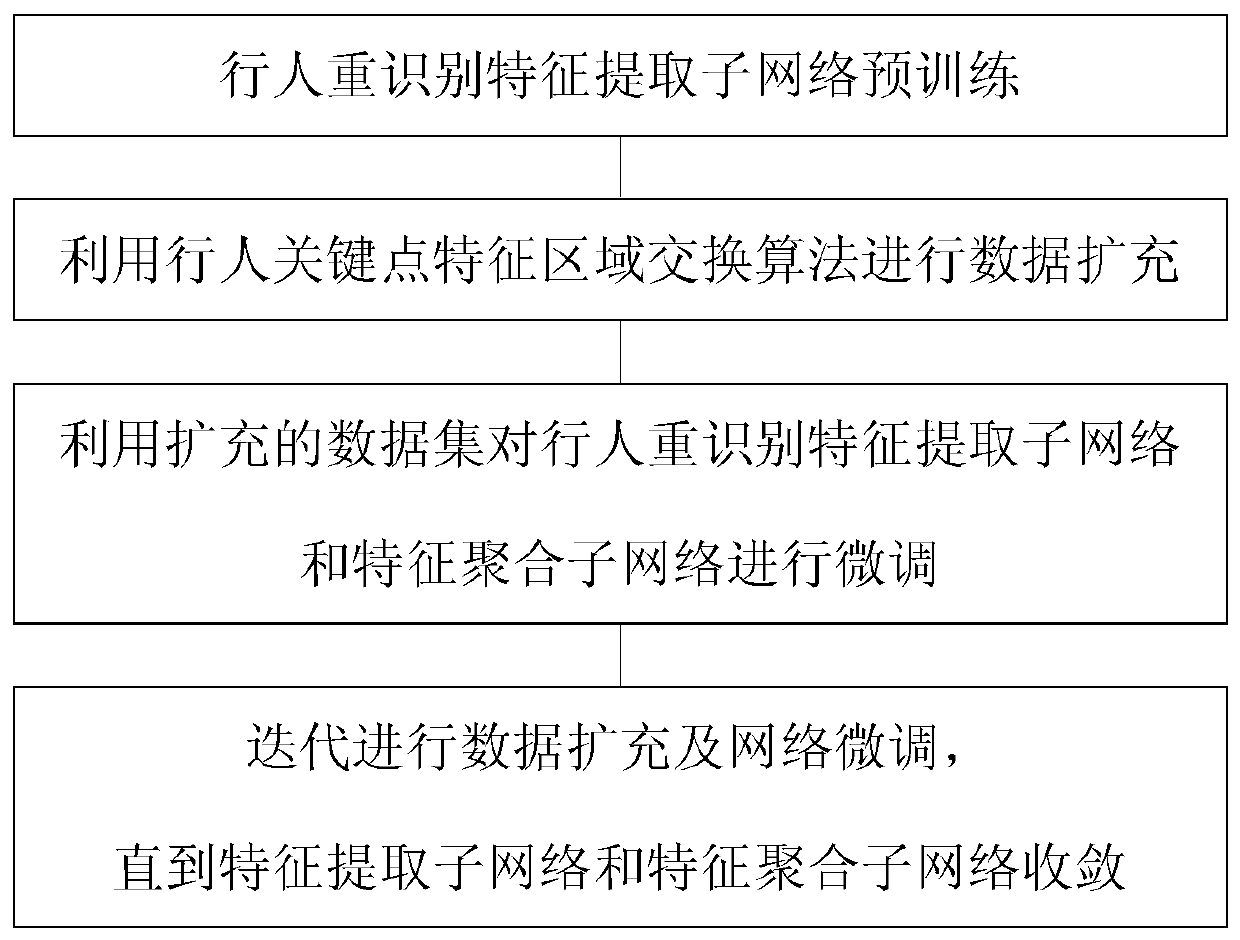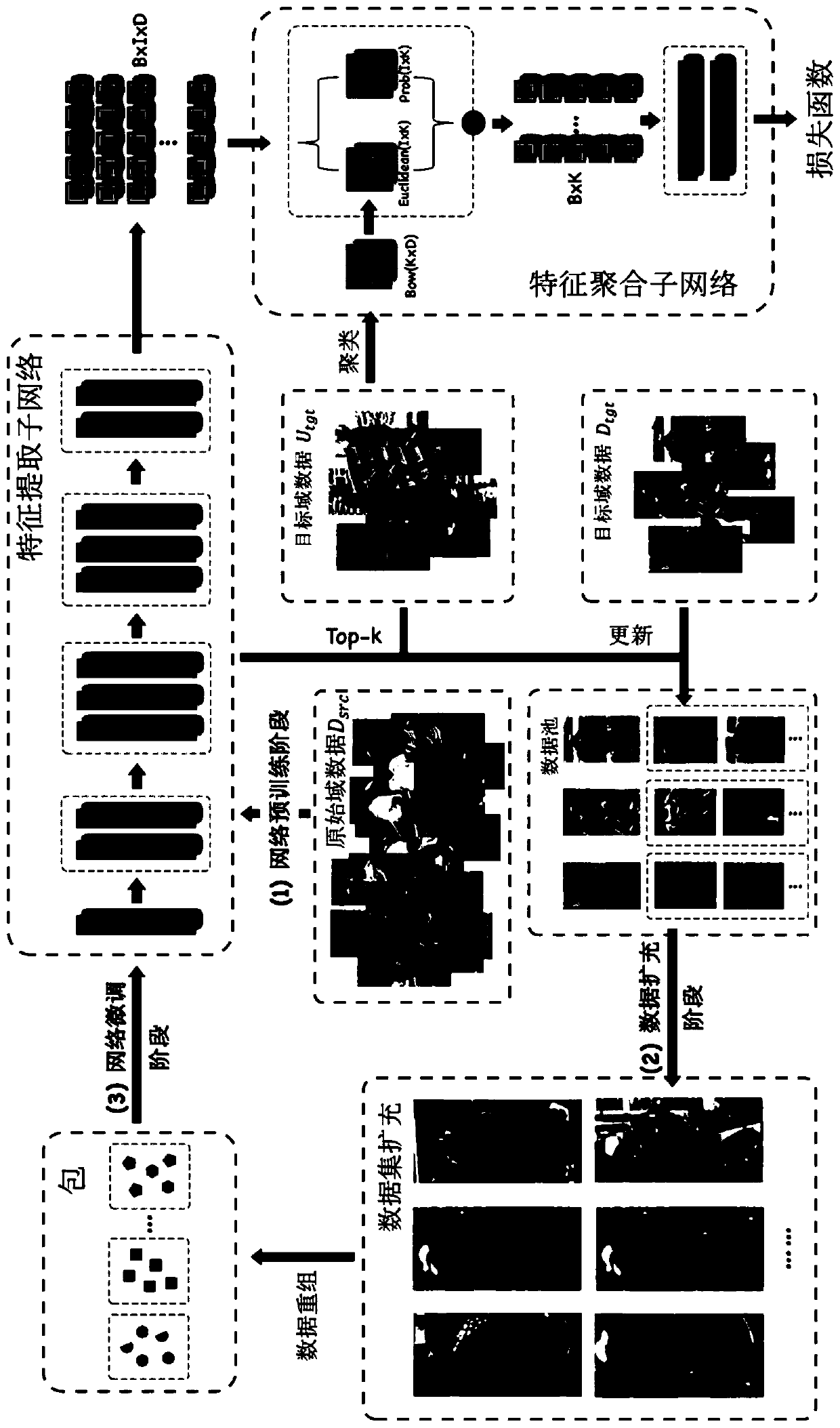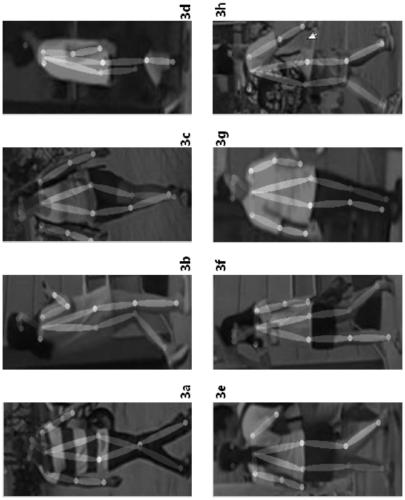Few-sample pedestrian re-identification method based on deep multi-example learning
A multi-example learning and pedestrian re-recognition technology, applied in character and pattern recognition, instruments, biological neural network models, etc., can solve problems such as difficulty in marking pedestrian pictures, and achieve good recognition accuracy.
- Summary
- Abstract
- Description
- Claims
- Application Information
AI Technical Summary
Problems solved by technology
Method used
Image
Examples
Embodiment Construction
[0038] Cooperate see figure 1 , figure 2 As shown, the present invention uses a multi-instance and few-sample pedestrian feature learning network framework to perform feature learning and identity recognition on pedestrian pictures. The multi-instance and few-sample pedestrian feature learning network framework mainly includes three stages: network pre-training stage, data set expansion stage, and network fine-tuning stage; it includes two networks: feature extraction sub-network and feature aggregation network.
[0039] In the network pre-training stage, a large amount of labeled training data in the original domain is used to train and learn the feature extraction sub-network, and the learned parameters are used as initial parameters for the feature extraction sub-network to apply to the target domain.
[0040] The data set expansion stage and the network fine-tuning stage are iteratively carried out until the two networks reach convergence, then the feature extraction sub...
PUM
 Login to View More
Login to View More Abstract
Description
Claims
Application Information
 Login to View More
Login to View More - R&D
- Intellectual Property
- Life Sciences
- Materials
- Tech Scout
- Unparalleled Data Quality
- Higher Quality Content
- 60% Fewer Hallucinations
Browse by: Latest US Patents, China's latest patents, Technical Efficacy Thesaurus, Application Domain, Technology Topic, Popular Technical Reports.
© 2025 PatSnap. All rights reserved.Legal|Privacy policy|Modern Slavery Act Transparency Statement|Sitemap|About US| Contact US: help@patsnap.com



